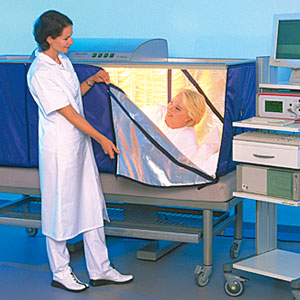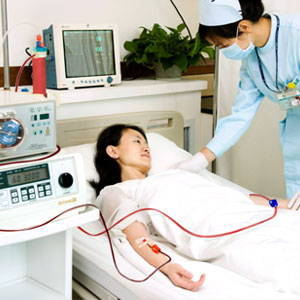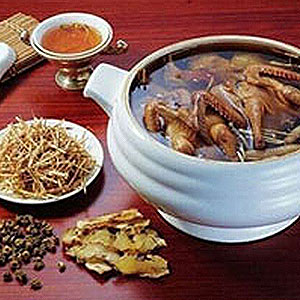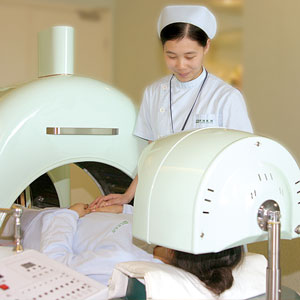Overview
The occurrence and development of cancer are associated with social-psychological factors. Different mental state may lead to different results including what causes cancer, treating cancer and preventing cancer. Studies indicate that the nervous system can govern the immune organs through neurotransmitters like norepinephrine and 5-hydroxytryptamine. Positive psychological states can help strengthen this dominance so that anti-bodies will increase. People in poor mental state can reduce the T lymphocyte in the blood and inhibit the function of B lymphocyte and macrophage thus resulting in weakening of the immunity. Paying attention to mental health not only prevents cancer effectively, but also is good for overcoming cancer.
Pavlov said, “persistent depression and anxiety potentially lead to physical problem. If one’s mental problem cannot be solved, cancer will probably occur and develop”. Emotional changes, such as depression, social isolation, jealousy, anxiety, worry, impatience, irritability, internalizing anger, unresolved grief, negativity and chronic stress can cause and develop cancer.
Common Psychological Problems in Cancer Patients
The types of psychological reaction in cancer patients are related to personality, psychological traits, disease severity and knowledge about cancer. The psychological reactions in cancer patients can be divided into six stages of adjustment: shock, confusion, fear, disbelief and denial, depression and finally acceptance.
1.Experience Period: When patients learn about their laboratory report and know he is diagnosed with cancer, he is shocked and felt his whole world is shattered. He is in disbelief and felt doomed. He becomes numb and possibly faint, which is referred to as “diagnostic shock”. This shock lasts for a short time, probably a few hours or a few days.
2.Confusion Period: In this period, patients will be in disbelief and may deny the diagnosis. They may even seek second opinions in other hospitals or pretend as the family member of patient to consult with other doctors. There is no trust relationship between patient and doctor at this time. On one hand, patients hope to get a definitive diagnosis. On the other hand, they hoped the diagnosis is inaccurate or incorrect. This negative attitude can be evaluated as negative psychological state. Refusal to accept the truth is a psychological reaction for trauma or stringent state. It is a defense mechanism to lower the degree of fear, relieve emotional pain and allow patient time to adapt.
3.Fear Period: Patients is frightened as they face the reality of the diagnosis. This feeling stems from fear of disease, pain, death, body defect and leaving family and friends. Patients feels scared, becomes emotional, has provocative and impulsive action, and a series of physiological changes, such as tremors, palpitation, elevation of blood pressure, paleness, sweating and etc…
4.Fantasy Period: At this stage, patients have endured painful experience since they had the disease. They can face this reality of discomfort but their illusion and denial remains, for example, they hope for a miracle and hope for a new drug that can eradicate their disease. This illusion may not have negative effect on patients. On the contrary, it can help the patients to fight the disease, boost confidence and coping capacity and relieve their fear and anxieties.
5.Depression Period: When all kinds of treatments cannot achieve good results; patients’ condition worsen and serious complications start to appear, patient will be in despair and lose confidence in the treatment. They would not listen to support from medical staff, their families and friends, and they will even have suicidal thoughts. Patients present with irritability, tension, non-compliance and uncooperative to prescription instructions.
6.Acceptance: In this phase, they have accepted the reality and admitted themselves as patients. They are in a stable mood and comply to treatments. They no longer fear death. When patients’ diseases are in the advanced stage, they are passive towards treatment of the disease. They no longer consider their responsibility for family and society; instead, they focus on the symptoms with despair and helplessness.
Psychotherapy for Cancer Patient
Education on Mental Health
We provide information about the laboratory test, diagnosis, therapy and its side effects, prognosis and the cost for patients. Moreover, we help patients understand the negative emotional reaction caused by disease and introduce different ways to cope, provide information about social support on the impact of cancer. We also help to clarify any patients’ misunderstanding and give them hope and support so as to relieve their difficulty adjusting to living with cancer and its treatment.
Cognitive Remediation
Cognition refers to people’s understanding and view, such as awareness of environment, opinion on some events, themselves and others, etc. Individual cognition is affected by emotion, will, motivation and behavior while it also affects individual emotion and behavior. In living daily life, people feel, understand, evaluate and predict the surroundings according to their individual cognition which guide their responses cognitive style and they make relatively fixed responses. That is to say, if there is problem and distortion in the individual’s cognition, the person will experience adjustment difficulty and negative thoughts which will exacerbate the psychosomatic disorder. something wrong and distorted in the cognitive style, people may have maladaptation and a bad mood, and make the psychosomatic disorder worsen. Therefore, cognitive therapy should focus on the following aspects: help patients change the unhealthy unsound cognition; adjust their distorted way of thinking, imagination and attitude; extricate them from negative attitudes; allow them to accept new and correct ideas so as to eliminate maladjustment and negative emotional reaction. Applying the cognitive therapy to patients when they are unstable because of accidents will be much more effective. Pressure will transform into strength to fighting the disease when people face cancer straight on.
Diseases easily strike people’s mind. As the cancer and symptoms resulting from treatment have serious impact on cancer patients’ body image, social function, mental function and quality of life, some patients lose confidence in life. Their pressure mainly stem from the worry about loss of health, loss of confidence in recovery. The negative psycho-reactions are mainly related to patients’ partial understanding about cancer. They believe cancer is equal to death, a cognitive distortion. Therefore, cognitive remediation is of great necessity. We should inform patients:
① Cancer is not equal to death.
② Cancer is a difficult to cure disease but it is not an incurable disease.
③ There is a process in cancer development and cancer treatment aims to inhibit or slow cancer growth.
④ As science is developing, there will be increasingly more available treatment.
⑤ Miracle happens when you believe.
Therapeutic Psychological Intervention
Conduct psychopharmacologic therapy. Use the anti-anxiety drugs, anti-depressant, anti-psychotic drugs and anesthetic to relieve adjustment disorder stimulated by cancer diagnosis and treatment, major anxiety disorder, major depressive disorder, delirium, schizophrenia, pain, nausea, vomit and insomnia and etc...
Cognitive-Behavioral Intervention. We help patients to establish positive cognitive approach and teach them some behavior training program, aiming to help them to change maladjusted cognition and maladjusted behaviors during cancer diagnosis, treatment and recovery.
Supportive-Expressive Intervention. We provide places like the health club of cancer patient for patient to share and discuss their problems of their disease that they care and express their feeling, such as fear, sadness, anger and so on.






















